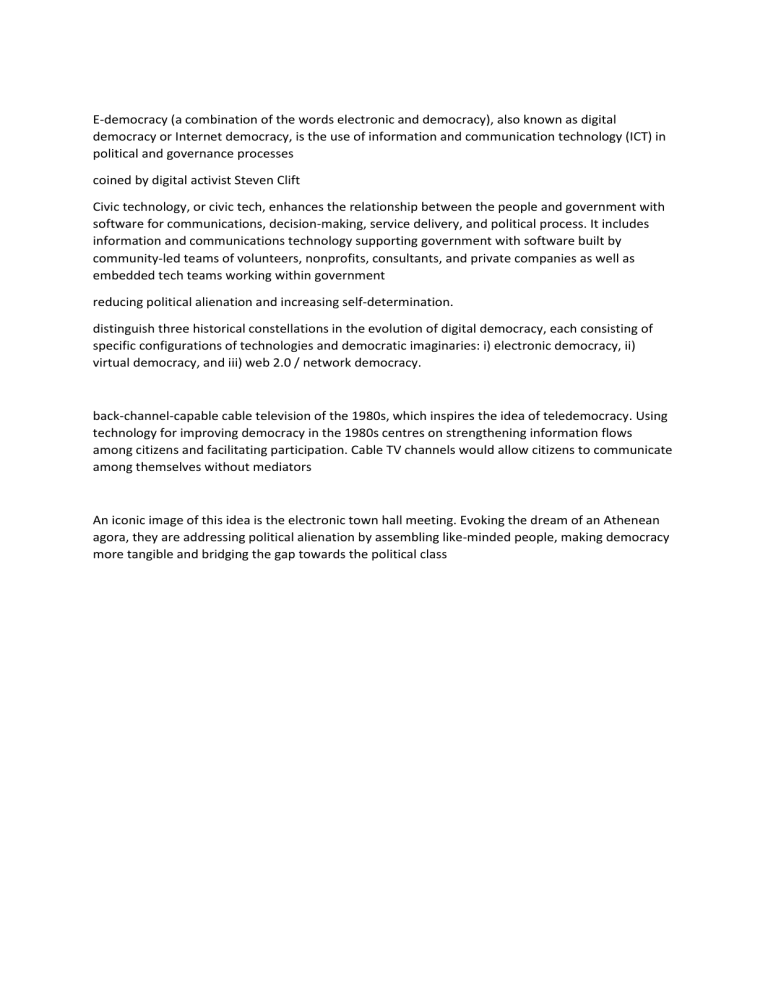
E-democracy (a combination of the words electronic and democracy), also known as digital democracy or Internet democracy, is the use of information and communication technology (ICT) in political and governance processes coined by digital activist Steven Clift Civic technology, or civic tech, enhances the relationship between the people and government with software for communications, decision-making, service delivery, and political process. It includes information and communications technology supporting government with software built by community-led teams of volunteers, nonprofits, consultants, and private companies as well as embedded tech teams working within government reducing political alienation and increasing self-determination. distinguish three historical constellations in the evolution of digital democracy, each consisting of specific configurations of technologies and democratic imaginaries: i) electronic democracy, ii) virtual democracy, and iii) web 2.0 / network democracy. back-channel-capable cable television of the 1980s, which inspires the idea of teledemocracy. Using technology for improving democracy in the 1980s centres on strengthening information flows among citizens and facilitating participation. Cable TV channels would allow citizens to communicate among themselves without mediators An iconic image of this idea is the electronic town hall meeting. Evoking the dream of an Athenean agora, they are addressing political alienation by assembling like-minded people, making democracy more tangible and bridging the gap towards the political class


